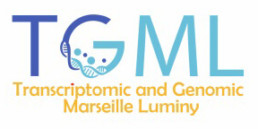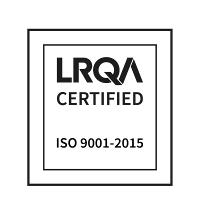Sequencing Platform of Marseille TGML
Introduction
For 20 years, the TGML platform has been a major player in genomics. This platform is hosted at the TAGC U1090 research unit, on the Luminy campus of Aix-Marseille University (AMU). The platform is directed by B. Loriod and D. Puthier.
The platform received the IBiSA label in 2008, and was then integrated into the France Génomique distributed infrastructure. In 2016, the TGML was awarded the AMU technology platform label, which was renewed until 2025. The institutions’ support is linked in particular to the model developed by the platform, which is based on strong expertise, standardised procedures and total openness to the national and international scientific community and to private companies. The platform has been certified “ISO 9001: 2015 & NFX 50-900: 2016” since 2015. More recently, the platform has become part of the Marseille Institute for Rare Diseases (MarMaRa).
A a key player in genomics teaching in the Bouches-du-Rhône region, TGML s involved iin the Master of Excellence project (led by C. Bordi) and has joined the Training and Research Interdisciplinary Platforms (TRIPS). TRIPS is the AMU’s new tool for strengthening the teaching of Master’s and PhD students through research.
The platform staff are involved in training on a national scale, training dozens of researchers each year at the Roscoff bioinformatics school for a week (D. Puthier) and on an international scale (Mexico, Algeria, Thailand, Brazil, Lebanon, etc.).
Expertise
- Transcriptomics : RNA-seq poly A selection and ribodepletion, miRNA-seq
- Genomics : Targeted re-sequencing, complete exome, SNV, small / large IndDels, etc.
- Epigenomics : CapStarr-Seq, ChIP-seq, FAIRE-seq / ATAC-seq, Mnase-seq, 3C-seq, 4C-seq
- Single Cell : scRNA-seq, scATAC-seq, cell-hashing
- Bioinformatics analysis : on request according to the project
Equipments
- Sequencing : NextSeq 2000 et NextSeq 500 (Illumina),
- Single-cell : Chromium Controller (10x genomics)
- Quality control: Fragment Analyzer (Agilent)
Research and Development
A three-year strategic plan allows us to plan funding applications and technological developments to be implemented. Developments are driven by (i) customer demand, (ii) scientific monitoring allowing senior researchers and engineers to keep abreast of developments in the field, (iii) regular meetings with associate researchers allowing information to be shared, (iii) webinars and the France Genomique workshop which allow to take advantage of different approaches
The TGML is seeking to implement multi-omics approaches, and the acquisition of Chromium X means that it is now possible to work on fixed cells, making the single-cell approach more flexible. In parallel with single-cell analysis, spatial transcriptomics is becoming a complementary method for resolving the complexity of organs or tissues. The TGML therefore plans to acquire the CytAssist (10X Genomics).
Main achievments
Over the last 2 years, the platform has accepted an average of 38 projects per year, with an average number of samples per year of 573. The main services offered are transcriptome analysis (e.g. RNA-seq, scRNA-seq, miRNA-seq), genome analysis (e.g. DNA-seq: SNPs, small/large InDels, full exome, targeted sequencing after capture) and epigenome analysis (e.g. ChIP-seq, Mnase-seq, FAIRE-seq). These services include bioinformatics analyses of data quality. The TGML also has significant expertise in bioinformatics.
Recent publications
Mokhtari A. et al. Using multiomic integration to improve blood biomarkers of major depressive disorder: a case-control study. EBioMedicine 2025 10.1016/j.ebiom.2025.105569
Sananmuang T. et al. Differential transcript usage across mammalian oocytes at the germinal vesicle and metaphase II stages. Theriogenology 2024 10.1016/j.theriogenology.2023.11.016
Chokeshaiusaha K. et al. Cross-species analysis of differential transcript usage in humans and chickens with fatty liver disease. Vet World 2023 10.14202/vetworld.2023.1964-1973
Madaci L. et al. Single-Cell Transcriptome Analysis of Acute Myeloid Leukemia Cells Using Methanol Fixation and Cryopreservation. Diseases 2023 10.3390/diseases12010001
Tao Wang T. et al. ATAD2 controls chromatin-bound HIRA turnover. Life Sci Alliance 2021 10.26508/lsa.202101151
Iuso D. et al. Nucleoside diphosphate kinases 1 and 2 regulate a protective liver response to a high-fat diet. Sci Adv. 2023 10.1126/sciadv.adh0140
Madaci L. et al. The Contribution of Multiplexing Single Cell RNA Sequencing in Acute Myeloid Leukemia. Diseases 2023 10.3390/diseases11030096
Mitoyan L. et al. Defining Anorectal Transition Zone Heterogeneity Using Single-Cell RNA Sequencing. Methods Mol Biol. 2023 10.1007/978-1-0716-3076-1_8
Mitoyan L. et al. In Vivo Model for Isolating Epithelial Cells of the Anorectal Transition Zone. Methods Mol Biol. 2023 10.1007/978-1-0716-3076-1_4
Last update March 2025

Certification / Quality Assurance
The entire activity of the platform is certified ISO 9001:2015 and NFX 50-900:2016
Labels
GIS IBiSA, Cancéropôle PACA, CoReBio PACA, Plateforme technologique AMU

Platform Managment
Béatrice Loriod
Campus Universitaire de Luminy
13009 Marseille
TAGC U1090
Inserm, Aix Marseille Université
Contacts
Béatrice Loriod : beatrice.loriod@inserm.fr
04 91 82 87 13

